The most typical pollutants which occur in fish:
- Organochlorine pesticides
- Polychlorinated biphenyls – PCB
- Toxic metals – Cd, Pb, Hg
- Dioxins and dioxin-like polychlorinated biphenyls – dl-PCB
- Histamine
- PAH in fish products
Dioxins +dl-PCB – organic pollutants most characteristic of fish.
In what situations can we be exposed to dioxins:
- By breathing polluted air – dioxins get into the blood circulation system through lungs
- With food (up to 90%) intake – dioxins get into the blood circulation system through intestines
- Through skin contact with material polluted with dioxins
Later, they mainly accumulate in fat.
Dioxins are removed from the body mainly with faeces or, in a much smaller amounts, with urine and milk in lactating mothers.
The toxicity of dioxins depends on:
- the amount of intake and time of exposure to dioxins,
- the sort of contact with dioxins (through skin form the soil, through respiratory system, from food),
- interactions with other pollutants,
- age, sex, lifestyle,
- health condition.
The indicator of consumer’s exposure to pollutants – PTWI – permitted tolerable weekly intake – a toxic element or compound from any source without adverse effects on health.
| ELEMENT OR COMPOUND | PER BODY MASS KG/WEEK | 70 KG PERSON/WEEK |
|---|---|---|
| Lead | 0.025 mg | 1.75 mg |
| Cadmium | 0.007 mg | 0.49 mg |
| Mercury | 0.0016 mg | 0.12 mg |
| Arsenic | 0.025 mg | 1.75 mg |
| DDT | 0.035 mg | 2.45 mg |
| Indicator PCB | 0.007 mg | 0.49 mg |
| Dioxins + dl-PCB | 14 pg WHO-TEQ | 980 pg WHO-TEQ |
| Organotin compounds | 0.7 µg | 0.049 mg |
| COUNTRY | FISH | MEAT | DAIRY PRODUCTS | EGGS | OTHER PRODUCTS |
|---|---|---|---|---|---|
| Australia | 39 | 11 | 31 | 2 | 8 |
| Poland | 7 | 43 | 35 | 9 | 6 |
| Finland | 63 | 6 | 16 | 4 | 11 |
| Italy | 35 | 32 | 26 | 7 | |
| the Netherlands | 2 | 20 | 39 | 4 | 35 |
| New Zealand | 7 | 40 | 19 | 24 | |
| Norway | 46 | 14 | 22 | 12 | 6 |
| Sweden | 34 | 31 | 19 | 2 | 14 |
| England | 6 | 20 | 25 | 4 | 45 |
| USA | 7 | 53 | 35 | 3 |
The amount of chosen fish species and fish products we can consume per week, not to exceed the mercury and dioxins PTWI.
| FISH SPECIES | AMOUNT CLASSIFIED BY THE CONTENT OF MERCURY | AMOUNT CLASSIFIED BY THE CONTENT OF DIOXINS +DL-PCB |
|---|---|---|
| Baltic cod | 2.370 g | 950 g |
| Baltic herring | 1.700 g | 400 g |
| Baltic salmon | 2.120 g | 105 g |
| Carp | 3.000 g | 7.000 g |
| Trout | 2.040 g | 2.500 g |
| Pollock | 11.700 g | 65.000 g |
| Sole | 2.340 g | 32.700 g |
| Pangasius | 20.740 g | 61.250 g |
| Tilapia | 22.900 g | 51.500 g |
| FISH PRODUCT | AMOUNT CLASSIFIED BY THE CONTENT OF MERCURY | AMOUNT CLASSIFIED BY THE CONTENT OF DIOXINS +DL-PCB |
|---|---|---|
| Sprat in tomato sauce | 7.000 g | 240 g |
| Tuna in oil | 1.670 g | 2.510 g |
| Sardine in oil | 4.670 g | 330 g |
| Smoked mackerel | 2.235 g | 1.170 g |
| Smoked Baltic salmon | 1.580 g | 75 g |
| Smoked Norwegian salmon | 2.800 g | 570 g |
| Smoked sprat | 4.350 g | 120 g |
| Marinated herring flaps | 2.140 g | 475 g |
| SPECIES | ANNUAL CONSUMPTION OF FISH MEAT [G] | WEEKLY CONSUMPTION OF FISH MEAT [G] | WEEKLY INTAKE OF DIOXINS + DLPCB [PG] | % PTWI |
|---|---|---|---|---|
| Herring | 1100 | 21 | 52.5 | 5.35 |
| Sprat | 400 | 7.7 | 36.2 | 3.67 |
| Mackerel | 400 | 7.7 | 0.23 | 0.02 |
| Baltic salmon/sea trout | 10 | 0.19 | 1.81 | 0.18 |
| Norwegian salmon | 400 | 7.7 | 10.54 | 1.08 |
| Trout | 300 | 5.8 | 2.26 | 0.23 |
| Carp | 200 | 3.8 | 0.53 | 0.05 |
| Pollock | 1400 | 26.9 | 0.4 | 0.04 |
| Pangasius | 400 | 7.7 | 0.12 | 0.013 |
| Cod | 300 | 5.8 | 6.09 | 0.62 |
| Hake | 200 | 3.8 | 0.12 | 0.012 |
| Other | 700 | 13.5 | 0.26 | 0.026 |
| TOTAL | 5810 | 111.79 | 110.86 | 11.29 |
| SPECIES | ANNUAL CONSUMPTION OF FISH MEAT [G] | WEEKLY CONSUMPTION OF FISH MEAT [G] | WEEKLY INTAKE OF MERCURY [MG] | % PTWI (70KG) |
|---|---|---|---|---|
| Herring | 1100 | 21 | 1.38 | 1.23 |
| Sprat | 400 | 7.7 | 0.2 | 0.18 |
| Mackerel | 400 | 7.7 | 0.39 | 0.34 |
| Baltic salmon/sea trout | 10 | 0.19 | 0.01 | 0.009 |
| Norwegian salmon | 400 | 7.7 | 0.31 | 0.28 |
| Trout | 300 | 5.8 | 0.32 | 0.28 |
| Carp | 200 | 3.8 | 0.14 | 0.13 |
| Pollock | 1400 | 26.9 | 0.25 | 0.22 |
| Pangasius | 400 | 7.7 | 0.04 | 0.04 |
| Cod | 300 | 5.8 | 0.27 | 0.24 |
| Hake | 200 | 3.8 | 0.02 | 0.02 |
| Other | 700 | 13.5 | 0.64 | 0.57 |
| TOTAL | 5810 | 111.79 | 3.97 | 3.54 |


